Heating Habits
→ Exploring our relationship with energy and heating through a series of material experiments, prototypes, and interactions.
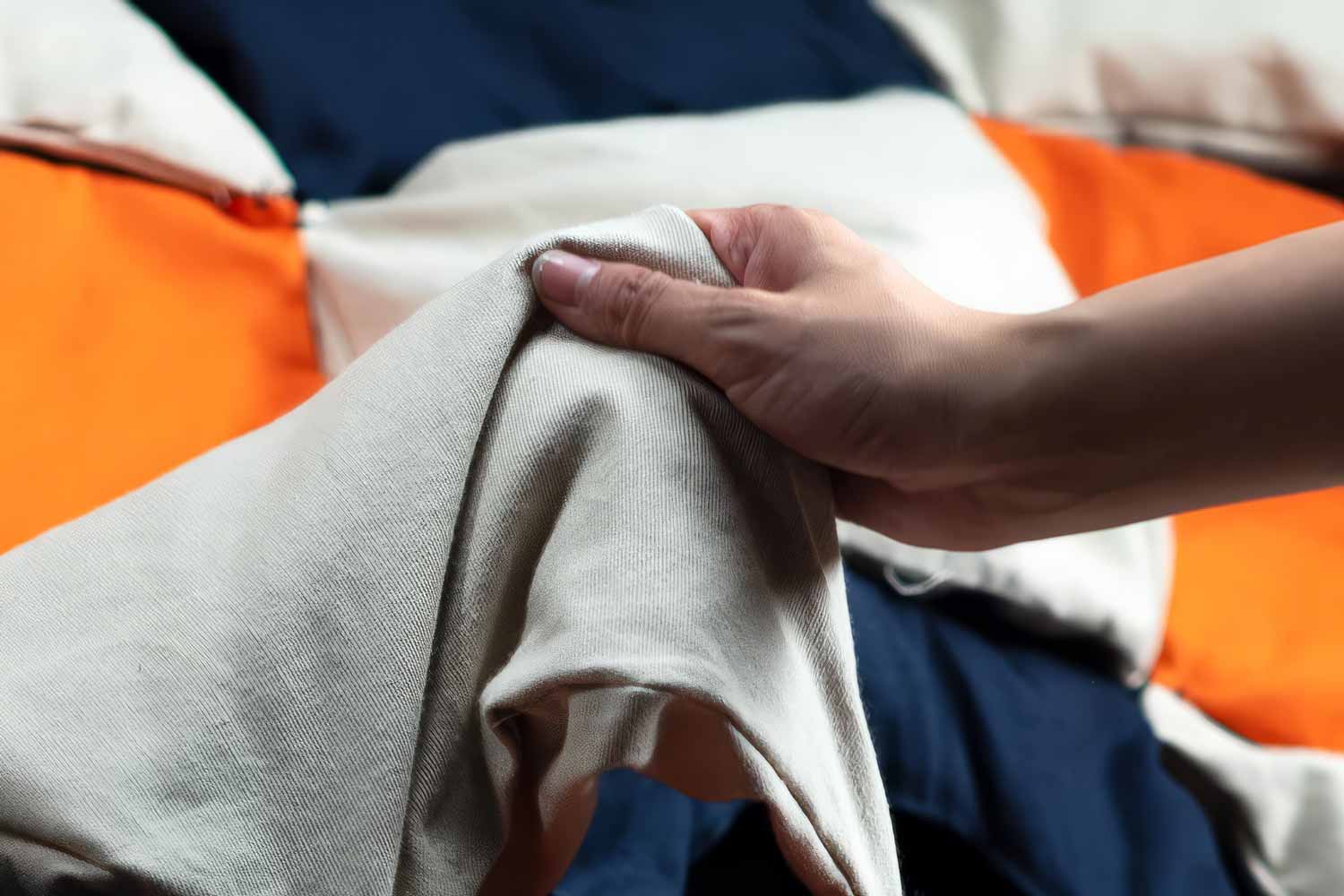
Paradox of the fireplace: While social function manifests itself in multiple different products (stove, TV, etc) the heating function (which was once the combining force) is centralized in a central heating system.
Rem Koolhaas, Elements of Architecutre, Taschen, Fireplace, p.8
Enery Relationships
If we look at the architectural history of the fireplace from its "invention" to the present day, we find that the development of central heating systems hidden behind the walls of today's buildings has resulted in the complete disappearance of the social functions that evolved around the fireplace, leading to an alienation of the energy we use. This is especially important in times of climate crisis, as our emotional relationship with energy has the potential to quickly and permanently alter consumption patterns. I set out to explore examples of how lifestyle habits can change our energy consumption.
The flame is concealed by the stove, the stove is exiled to the basement, and the iron pipe is the new heating apparatus of choice.
Rem Koolhaas, Elements of Architecutre, Taschen, Fireplace, p.133
Rituals & Structure
The fireplace had to be ritualistically kept in good condition. If we look at the cultural significance of the fireplace, we see that social structures and order were organized around the maintenance of the fire. Today's central heating roughly heats the entire air column of the room, making it unstructured and uncomfortable. Lowering the ambient air temperature by 4 degrees would already result in energy savings of around 36%. The logical consequence is small ritualistic heating sources that structure the space and radiate localized heat without using the total air of the room as the main carrier medium.
Small, radiant heat sources structure the space and create a network of paths and areas in the room.
Christopher Alexander, A Pattern Language, p.646, p. 1080, p. 1162
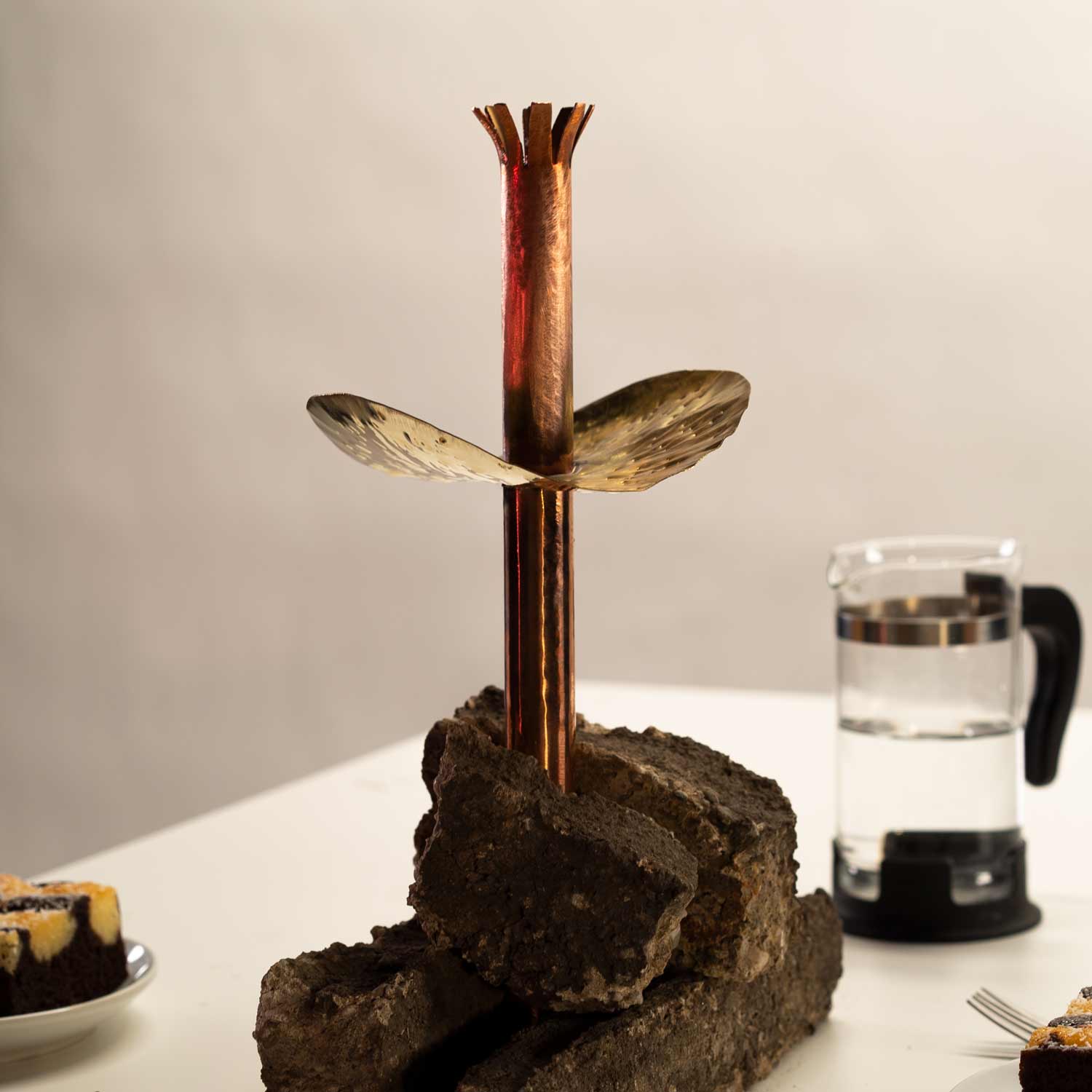
Zeolite
Zeolite means boiling stone in Greek. Actually of vulcanic origin, it is used today as a synthetically produced aluminum silicate in industry, but also in the household (dishwasher, heatpump). Zeolite is very porous. So porous, in fact, that heat is generated when water molecules - which rub against the surface of its countless tiny channels - are absorbed. Zeolite is therefore a potential battery, that can store energy in the form of a potential (dryness). By adding heat (e.g.: solar oven) the material can be dried again. After that, the activation process can start again.

The Torch
Because of the feedback that the properties of the zeolite were almost considered mystical, I soldered a copper "torch" which could be placed like a vase in the middle of a dining table. While staying at the table, water had to be poured constantly onto the zeolite inside the torch to maintain the heat production. A graphic interpretation of the fireplace.
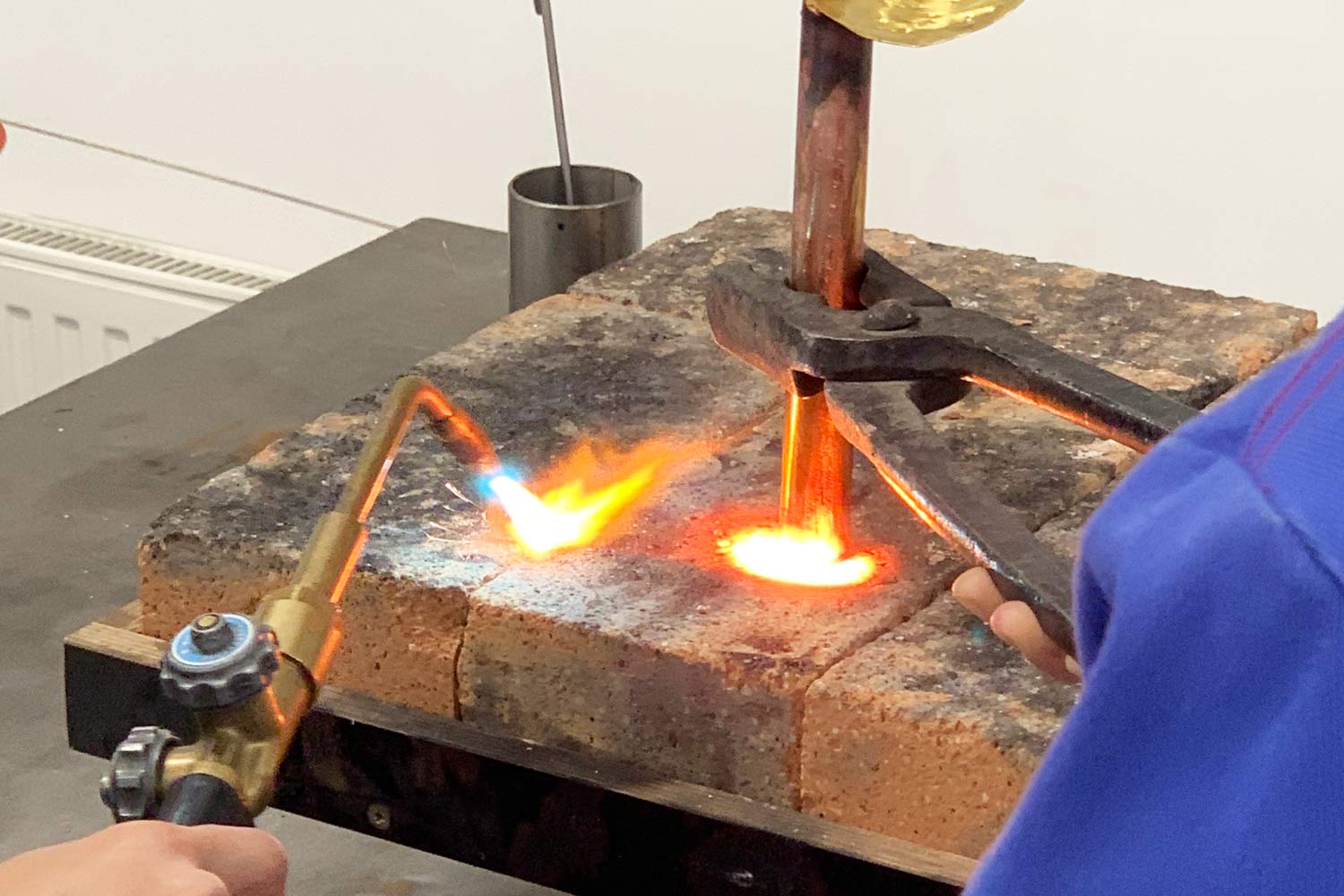

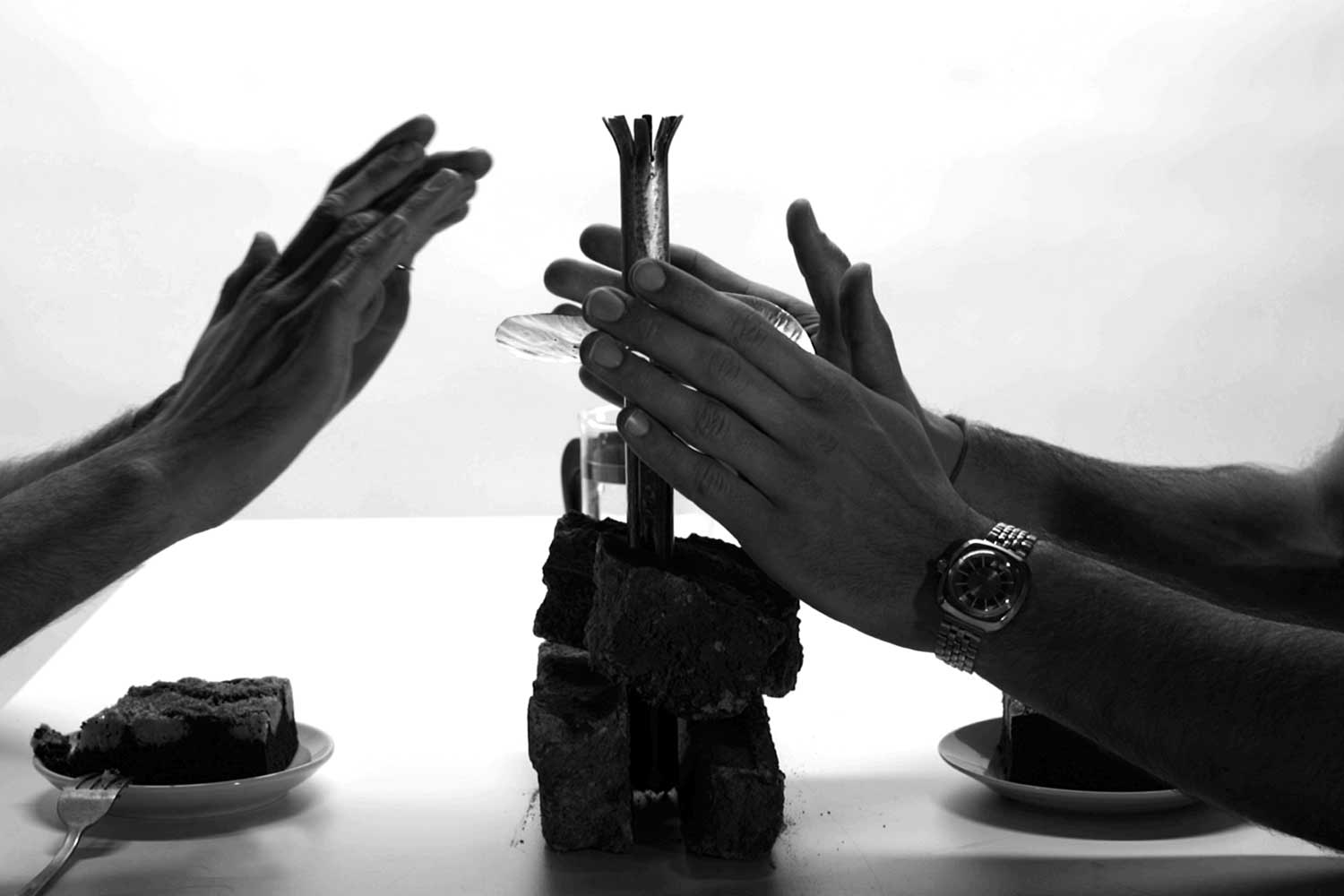
Sodium acetate
Then I turned my attention to another potential heat storage material. The choice fell on sodium acetate, which is well known from hand warmers. If you dissolve sodium acetate in distilled water in the right ratio, you get a supersaturated salt solution. If this solution is made to crystallize, heat energy is generated during the crystallization process. If the cushion is warmed up again (water bath), the solution liquefies and - when it has cooled down to room temperature - is ready for use again. This cycle is infinitely repeatable.
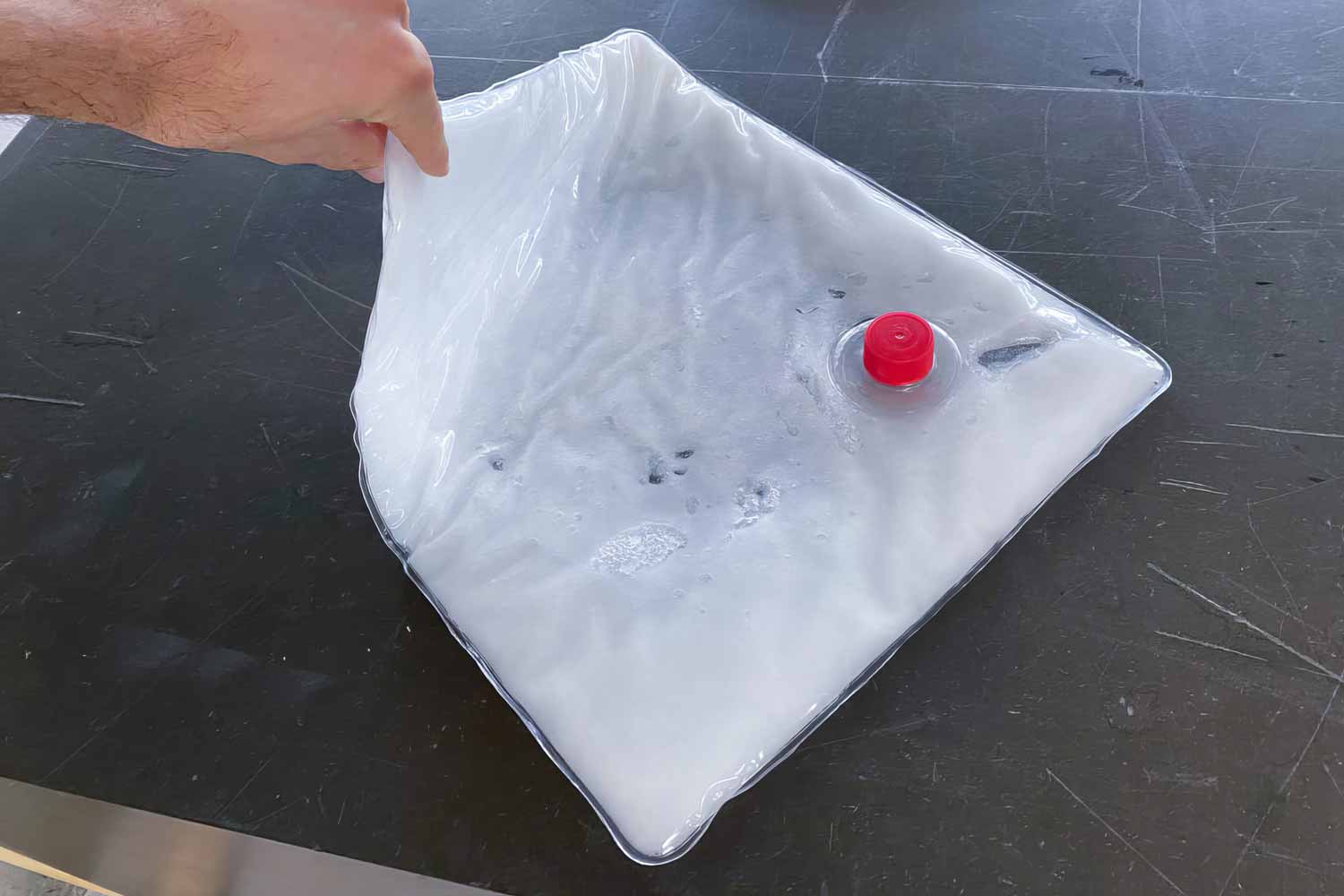
Modular blanket
This time a large surface turned out to be more suitable. As a test, I HF-welded a 50x50cm PVC cushion and filled it with about 1.8l of the solution. Result was about 60C° over 30min. By kneading again, the reaction could be cranked up once more, thus extending the duration of heat generation. I decided to make contact heat and molding and kneading an application mode of a speculative product. A modular blanket or, depending on the size, a rug or cape was designed and patterned from three modules. By walking on it, wrapping oneself in it and other movements, the heat-generating reaction should be triggered and maintained.
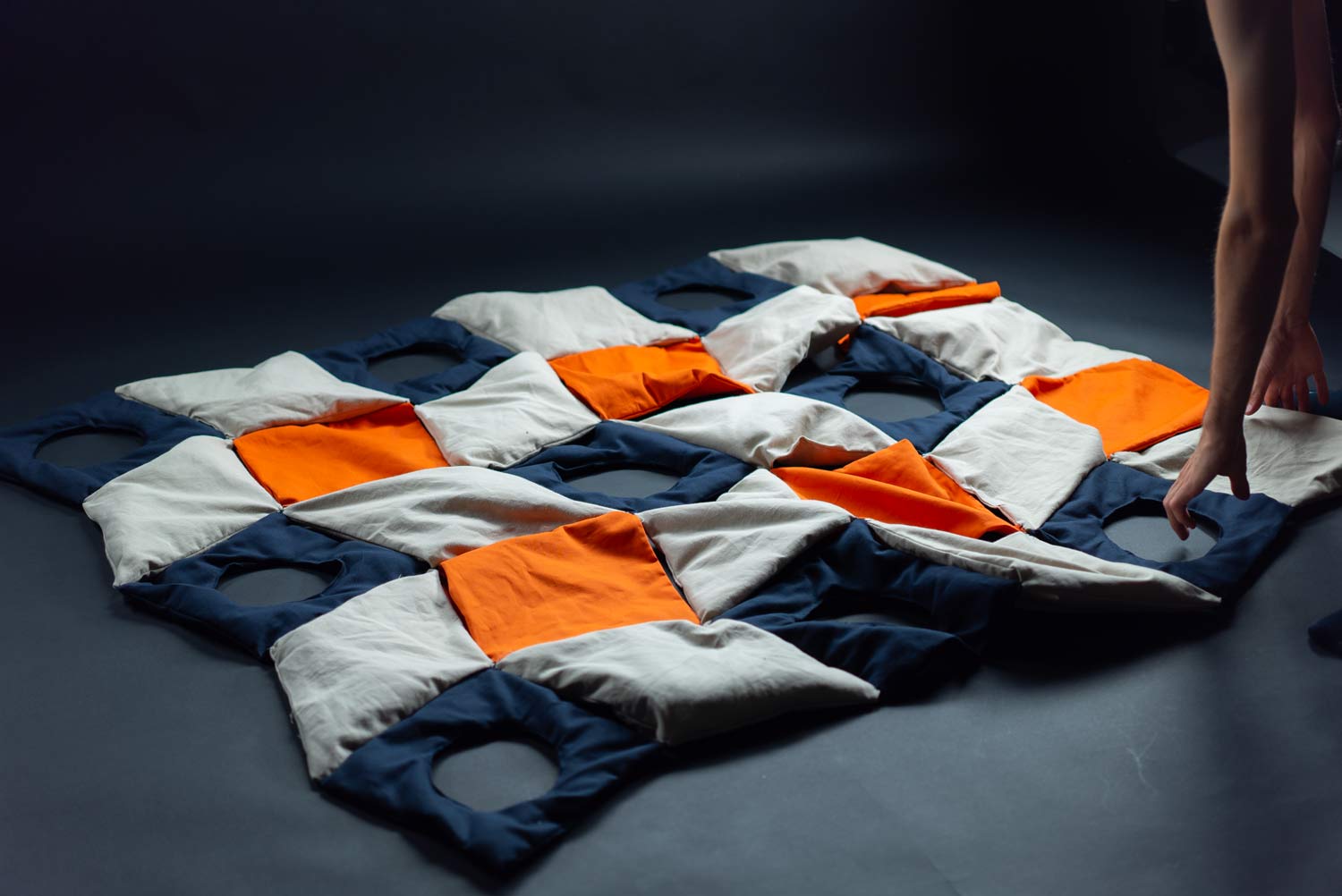
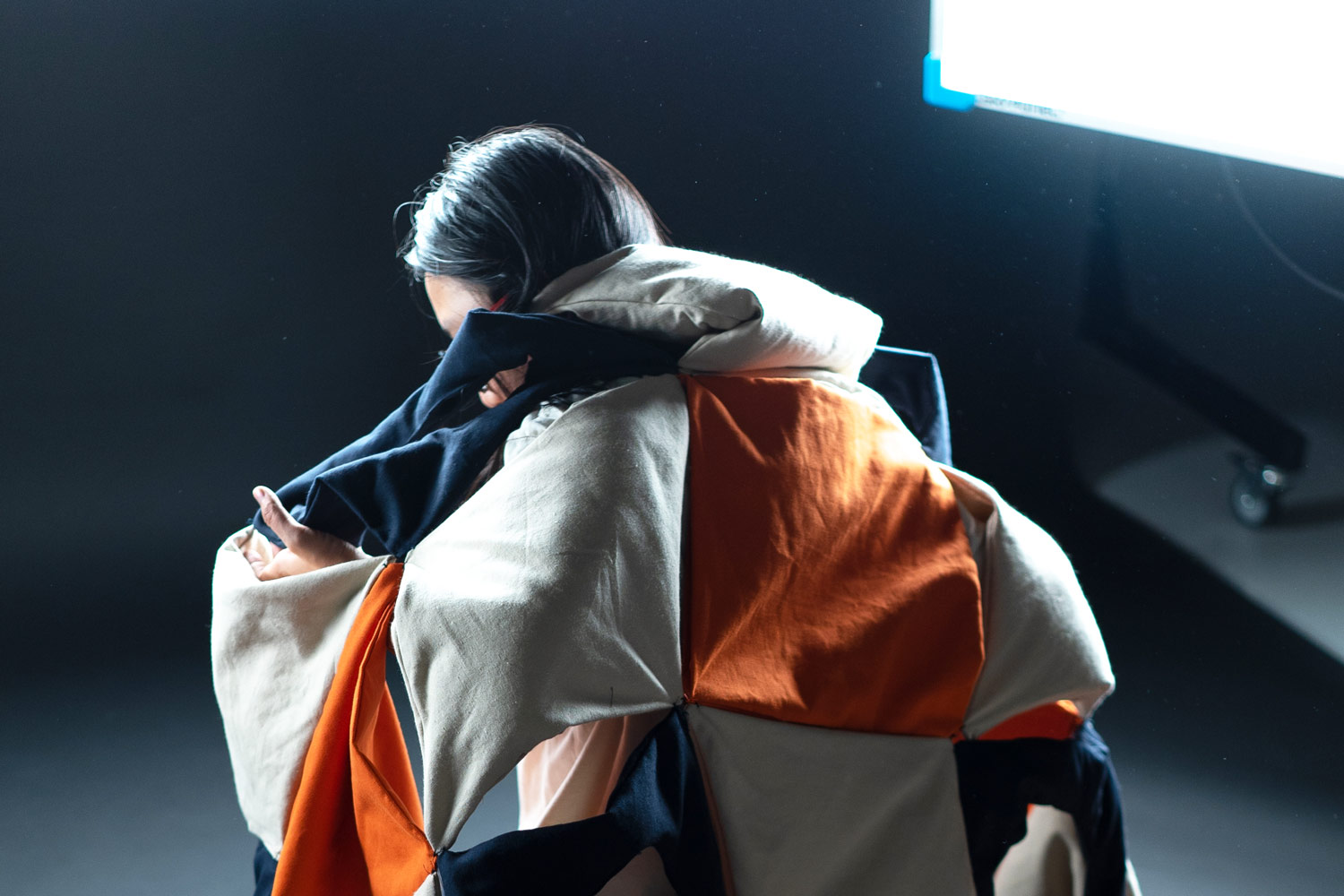
Credits
Project was created during my guest semester in the Industrial Design class of Prof. Stefan Diez. Project supervision Elisabeth Wildling and Peter Mahlknecht. Thanks to Lilian Marie Furrer.